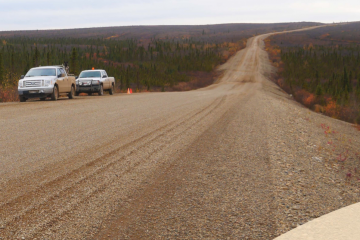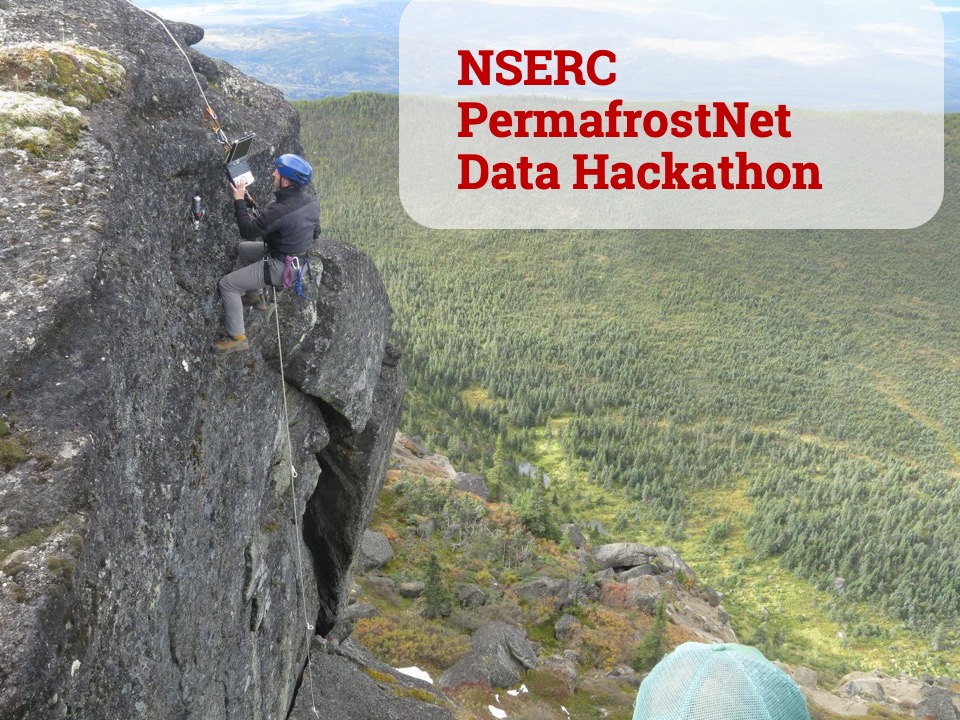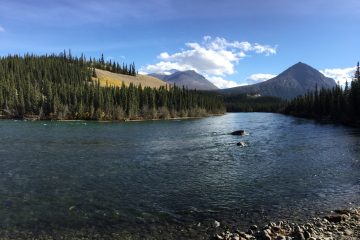Galina, Hannah, Emilie and Stephan spent a couple of weeks in Yellowknife, Northwest Territories (NWT), reading out data and exchanging ground and rock temperature loggers, soil moisture sensors and tilt loggers for measuring ground subsidence. A highlight was using a metal detector to find temperature loggers hiding just below the ground surface, installed nearly five years ago. In mid-August, we hopped on a floatplane heading to KDI, an exploration camp, approximately 300 km northeast of Yellowknife. Here, we read out and exchanged loggers for a network of around 80 soil and 10 rock near surface temperature loggers, and 12 thermistor strings installed in boreholes. We spent our days in the field and our evenings back at camp organizing the collected data, soldering new batteries into loggers and of course enjoying the camp cook’s wonderful food.
Going out in the field this summer and collecting data from a number of different locations offered us valuable learning opportunities. We experienced periglacial features in person; jumping across the wet troughs of ice-wedge polygons, enjoying the easy walking of an esker, and using the edge of a solifluction lobe as a seat. We became acquainted with the different types of tundra vegetation, learning to identify common northern plants like dwarf birch and to recognize Labrador tea by its earthy smell. We are now especially well versed in the identification of cloudberries and blueberries, yum yum! The fluffy mosses were a favourite stop for well-deserved naps whereas the thick willows teeming with black flies were an unpopular route choice. On our third day at KDI, we were met by a large muskox herd, roaming the vast rolling landscape, seemingly unbothered by our presence. It was a fascinating sight! A lone curious muskox did however follow us around at a distance, causing us to reschedule some of our maintenance work.
The data we collected in the field will support a number of research projects in NSERC PermafrostNet. Ground temperature data will be used to test permafrost models and give insight into permafrost changes in the Canadian North, supplementing the data that we have available from Lac de Gras, NWT.
Successful fieldwork wouldn’t be possible without the amazing support of northern organizations such as the Northwest Territories Geological Survey (NTGS), Aurora Geosciences and Kennedy Diamonds Inc. (KDI). The NTGS was welcoming and allowed us to use their office as a home base for storage and essential equipment servicing, and gave us the chance to learn from local employees. The staff at the KDI camp was always accommodating and supportive of our work.
We would like to acknowledge our fieldwork activities took place in Chief Drygeese territory. From time immemorial, it has been the traditional land of the Yellowknives Dene First Nation, and more recently, the homeland of the North Slave Métis Alliance. We respect the histories, languages, and cultures of First Nations, Métis, Inuit, and all First Peoples of Canada, whose presence continues to enrich our vibrant community.
YKDFN: Chief Drygeese Territories (1900 & 1920, Treaty 8) (Link 1)



















